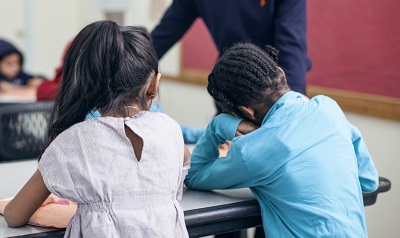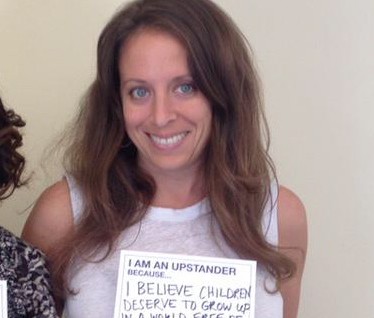Shelter isn’t easy for kids, but it can lead to a world of change.
Tyler was 15, Matt was 13 and Alicia was just 9 when they arrived at the doors of the Rosa Parks Crisis Shelter with their mother Nancy.
“I remember the first day that every family comes in,” says Keyra Carpio, Children’s Activities Specialist at Rosa Parks. “When I came down to meet with Nancy’s family, the three kids were tucked into their hoodies, silently checking their phones – doing everything to block themselves out from the situation.”
Nancy and her kids left an abusive father and a lifetime of instability, and were ready to start over free from violence. But the challenges they faced were extreme – one day after arriving at the shelter, Nancy was diagnosed with cancer.
Finding safety in shelter
Rosa Parks is one of Sanctuary’s five crisis shelters, the first place families go when escaping domestic violence. Home to five families at any given time, the shelter is a tidy, bright building with a backyard, a dedicated children’s room, and separate full apartments for each family.
Residents and staff treat the shelter like a true home and care for each other like family. Rosa Parks definitely challenges stereotypical expectations of shelter in New York City.
But entering shelter, no matter how welcoming or warm, is never easy, and holds extra challenges for children and teens.
“The first few weeks are always the most difficult for children and teens in shelter, but especially for Nancy’s family,” says Keyra. “Tyler, Matt and Alicia felt insecure and uncertain from being in such an unfamiliar place, and on top of that, now their mother had to navigate advanced-stage cancer.”
Transforming children, and moms
Keyra and the Rosa Parks staff help kids and families transform every day by providing extensive children’s and youth services on-site, for all young residents. Along with a dedicated Children’s Room for play, art and homework, Keyra plans an extensive art curriculum for every kid by age group.
Art, says Keyra, helps kids open up. “Just painting a self-portrait helps kids speak and share about themselves. Engaging with pictures and art let kids explore who they are, which is critical.”
Staff advocate for the kids to get them enrolled in school, and sort out any school issues that might conflict with shelter circumstances. Tutors come to Rosa Parks to help kids out with their studies.
Fields trips to museums and theater workshops take place at least once a month, and the staff takes advantage of every opportunity to throw a celebration, from birthdays to graduations to holidays.
Trips and parties aren’t just for kids – moms take part too. After moms and kids have experienced trauma from abuse, these group activities can help them come back together and rebuild their relationships.
A community pulls together
For Nancy and her kids, the Rosa Parks community played a crucial role in their journey from fear and abuse to safety and security.
“When Nancy was diagnosed, it was a drastic change for the family, even after all they’d been through,” says Keyra. “Suddenly, the kids had to take real responsibility, because their mom could not handle it all on her own.”
Nancy had to travel from Brooklyn to the Bronx daily for chemotherapy and radiation, and there were days, in the throes of her illness, where she did not think she could get out of bed.
The Rose Parks staff helped the family develop a plan for getting chores done, getting the kids to school and Nancy to her appointments. The family’s counselors and shelter staff held regular check-ins, planning for how to keep everyone going through the most challenging of times.
Slowly, the family pulled through.
Rebuilding a family through art
As Nancy progressed in her treatment and grew stronger, she began to spend time in the Children’s Room.
Inspired by the art projects hanging on the walls, Nancy wanted to do something for herself.
“Nancy wanted to feel productive and creative again,” says Keyra. “She came up with an idea to create an ‘art journal,’ documenting the challenges and joys of her time battling cancer.”
Soon, the entire family was taking part in this temporary relief from their day to day struggles. Over six weeks, they created six paintings, each one meaningful in a different way. Together, they represent the family’s long journey to safety and happiness.
A happy beginning
Six months after arriving in shelter, Nancy and the kids moved on to a transitional shelter. Recently they found permanent housing through New York City’s new LINC program.
Nancy is cancer-free, and her children have found their confidence again.
They plan to decorate their new home with their art.
This post is one of a series about children that we are sharing during Domestic Violence Awareness Month. Visit our blog for more, and find out how you can speak out during Domestic Violence Awareness Month.


